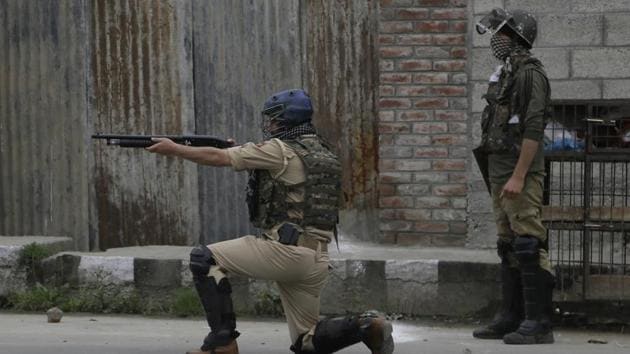Civilian fatalities on the rise in Kashmir: 2 more protesters killed near Anantnag encounter site
So far 22 civilians — mostly protesters — were killed ostensibly in firing by forces since February 15 when army chief General Bipin Rawat warned of stern action against civilians who would try to disrupt counter-insurgency operations.
Two civilians were killed on Saturday near an encounter site in Jammu and Kashmir’s Anantnag, with police saying that they were caught in the cross-fire, as the restive state of late witnessed a spike in civilian killings after army talked tough.

Eyewitnesses said that hundreds of protesters had moved towards the encounter site to save cornered militants, triggering clashes, and forces allegedly opened fire.
So far 22 civilians — mostly protesters — were killed ostensibly in firing by forces since February 15 when army chief General Bipin Rawat warned of stern action against civilians who would try to disrupt counter-insurgency operations.
Spot media reports of the 22 deaths, corroborated by rights activists in Kashmir, say that the deaths were caused either by alleged firing by forces to quell protests or in some cases, as authorities said, by a stray bullet in cross-firing between militants and security forces.
In some cases, eyewitnesses claimed, the victims were not even stone-pelters and were simply caught in the chaos.
The number of deaths is a steep rise from the figures of the corresponding period of February 14 to July 1 last year which saw the killing of seven protesters — two near an encounter site in Pulwama district (February 14) and five in north Kashmir’s Handwara town after protests erupted over allegations of a soldier molesting a minor girl (mid-April).
From July 8, however, the Valley slipped into a state of unrest for over five months, registering a civilian death toll of over 90, as forces fired bullets and pellets on protesters.
The first protester killed after the general’s warning was a 14-year-old boy, Amir Nazir, of Pulwama district, whose family says he was among hundreds who rushed to an encounter site at Padgampora on March 9 to pelt stones at security forces engaged in the gun-battle, in a bid to distract them and help the militants escape.
Three more protesters were gunned down in Budgam district’s Chadoora area on March 28 as forces fired to disperse stone-pelters during an encounter.
April saw a major spike in civilian killings in forces’ firing with 10 protesters — including eight on the day of Lok Sabha bypoll for Srinagar constituency in Budgam district — being killed. Two other protesters, including a 15-year-old boy in Srinagar, were killed in separate incidents in Kupwara and Srinagar.
In May, one protester was killed as protests erupted near the site of the gun-battle in which popular Hizbul Mujahideen militant Sabzar Bhat was killed, while June saw the killing of five protesters in separate incidents in Shopian, Rangreth, Pulwama and Arwani.
The first day of July saw the killing of two civilians near the Anantnag encounter site.
After the killing of Tawseef Wani near an encounter site in Pulwama last month, the Valley’s joint separatist leadership, comprising Syed Ali Geelani, Mirwaiz Umar Farooq and Yasin Malik, in a statement said the forces were provided with a license to kill at will.
“After Indian army chief Bipin Rawat’s threat, the graph of civilian killings has increased in Jammu and Kashmir, and the forces have been provided a license to kill at will,” a joint statement by them said.
Police had said Wani was a “habitual stone–pelter”.
Data from the Jammu Kashmir Coalition of Civil Society (JKCCS) shows that there has been a spike in civilian deaths in the January-June period in conflict-related incidents this year. While 17 civilians were killed during the period in 2016, this year the toll has crossed 55.





